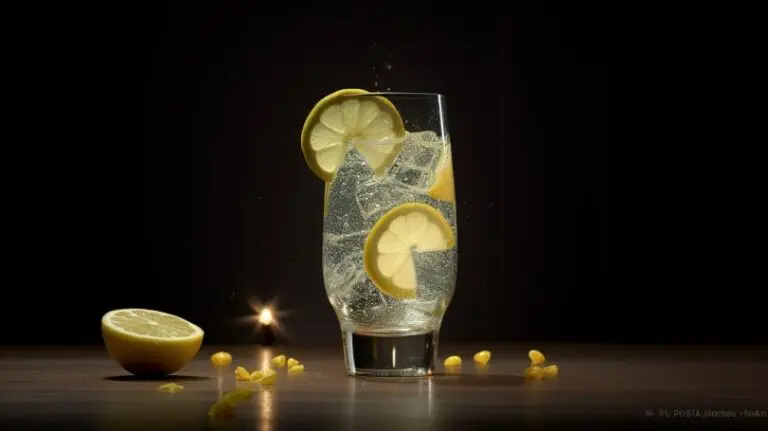Can Sprite Clean Silver?
Can Sprite clean silver? Prepare to be surprised as we uncover the unexpected powers hidden within a simple carbonated beverage.
When it comes to cleaning silverware, we often rely on specialized cleaners and polishing agents.
However, what if an everyday drink like Sprite held the key to restoring your tarnished silver to its former gleaming glory?
It sounds implausible, but the remarkable properties of this popular soda might just hold the secret to a dazzling shine.
In this intriguing exploration, we’ll dive into the science behind this surprising phenomenon and discover whether Sprite truly possesses the ability to transform dull silver into radiant brilliance.
Get ready to challenge your assumptions and unlock the untold potential of a household favorite.
By the end of this article, you’ll have a better understanding of whether or not using Sprite to clean your silver is a viable option and how to do so safely and effectively if you choose to give it a try.
Key Takeaways
- Sprite contains citric acid and has a pH level ranging from 2.4 to 2.8, making it an effective cleaning agent for silver tarnish.
- Personal anecdotes suggest that using Sprite can be an effective way to remove tarnish from silver, but caution must be taken as using Sprite can leave behind residue or even damage the item being cleaned.
- Choosing a cleaning method ultimately depends on individual preferences and risk tolerance, and research and assessment of potential risks and benefits are necessary before choosing a cleaning method.
- Professional silver cleaning services offer specialized equipment and solutions for safe tarnish removal and may provide better cleaning results than DIY methods.
The Science Behind Silver Tarnish
The process of silver tarnishing is due to the chemical reactions between silver and sulfur-containing substances present in the air or on the surface of objects.
This reaction causes a blackish layer to form on the surface of silver which alters its appearance.
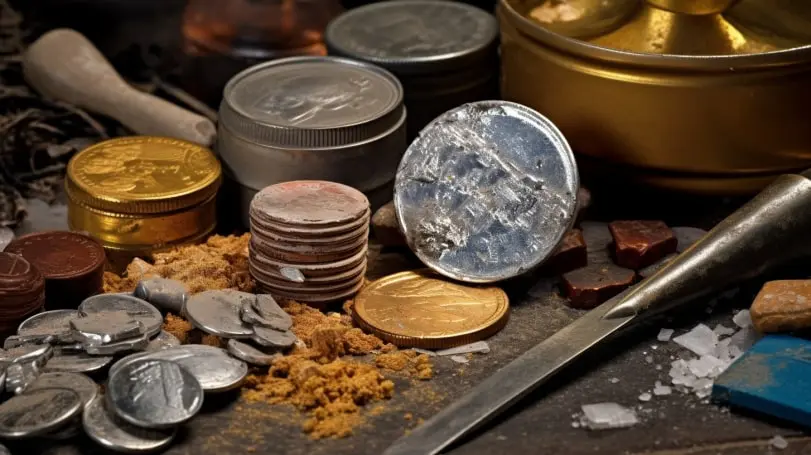
The oxidation process that occurs when silver reacts with sulfur-containing substances involves a transfer of electrons from one element to another, leading to the formation of a new compound.
The tarnishing process can be slowed down or prevented by limiting contact with sulfur-containing substances such as those found in certain foods, rubber products, and paints.
Tarnished silver can be restored using various methods including polishing and electrochemical restoration. However, it is important to note that not all cleaning agents are effective for removing tarnish from silver without causing damage.
It remains unclear whether Sprite can effectively clean tarnished silver without causing harm due to its acidic content.
What Makes Sprite an Effective Cleaning Agent?
One effective cleaning agent that can be found in many households is Sprite.
It possesses unique properties that make it capable of removing stubborn stains and grime from a variety of surfaces, including silver.
In order to understand how Sprite works as a cleaning agent for silver, it’s important to examine its chemical composition and pH level.
Sprite contains citric acid, which gives it its acidic properties. The pH level of Sprite ranges from 2.4 to 2.8, making it slightly more acidic than vinegar but less acidic than lemon juice.
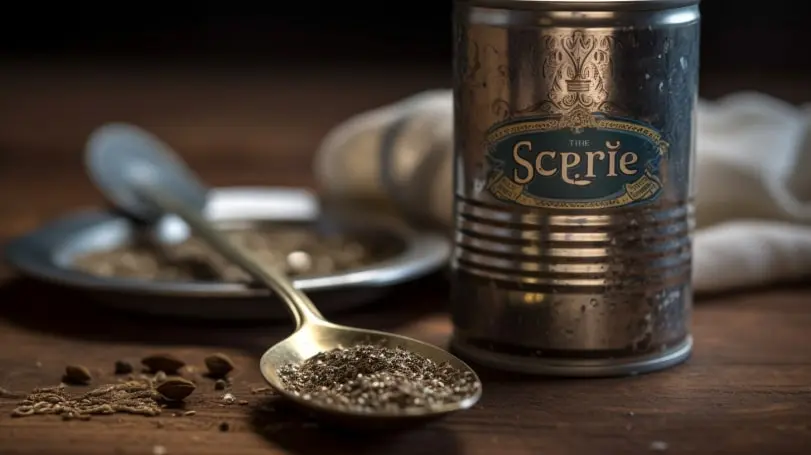
When applied to tarnished silver, the citric acid in Sprite reacts with the sulfur compounds that cause tarnish and breaks them down into their component parts, making them easier to wipe away.
This makes Sprite an effective choice for cleaning silver without causing damage or scratching the surface.
In comparative analysis studies, Sprite has been shown to be just as effective as other acidic cleaning agents for silver such as white vinegar and lemon juice.
However, unlike these alternatives, Sprite has a pleasant scent and doesn’t leave behind a harsh smell after use.
Overall, the unique combination of citric acid and its pH level make Sprite an effective choice for those looking to clean their silver items at home without damaging them in the process.
Can Sprite Clean Silver?
While Sprite is undoubtedly a delicious carbonated beverage, it doesn’t possess the special powers needed to clean silver effectively. Sorry to burst your bubble!
You see, silver tarnish occurs due to a chemical reaction between the silver and sulfur compounds in the air.
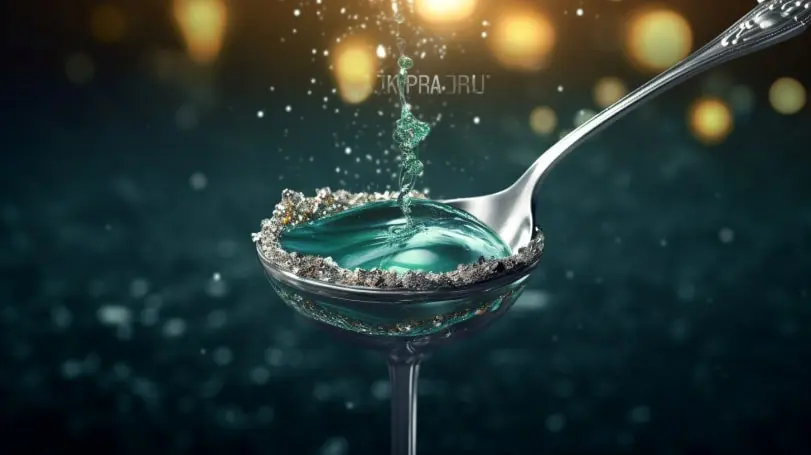
To restore that dazzling shine, you need a cleaning method that specifically targets and removes tarnish. While there are various effective methods available, Sprite isn’t one of them.
Sprite contains carbonation, water, and a blend of flavors that make it a delightful drink, but it lacks the necessary cleaning agents to tackle silver tarnish effectively.
So, if you’re looking to restore your silver’s luster, I recommend turning to tried-and-true methods like silver polish, baking soda paste, or specialized silver-cleaning products.
The Experiences of Those Who Have Tried It
Individuals who have utilized a certain carbonated beverage as a cleaning agent on their tarnished silver items have reported varying degrees of success.
Personal anecdotes suggest that some people have experienced positive results, while others have had unexpected outcomes that they did not anticipate.
While the use of Sprite as a cleaning agent may seem like an easy and cost-effective solution to clean silver, there are both pros and cons to consider.
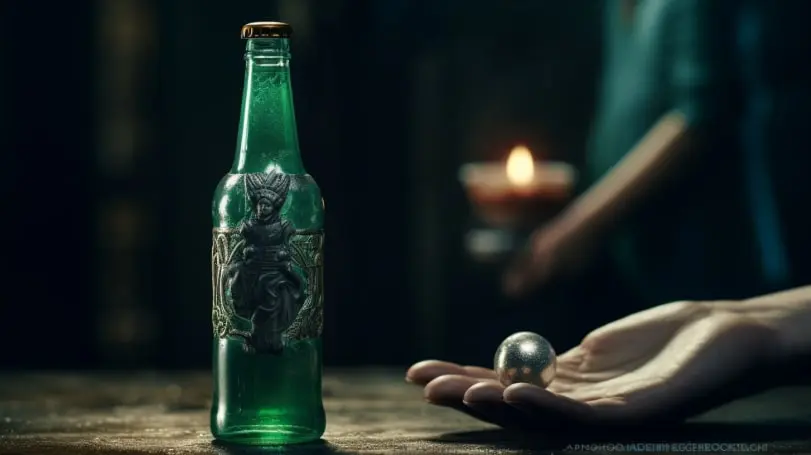
On the positive side, many people report that using Sprite can be an effective way to remove tarnish from their silver items.
Some individuals claim that it is particularly useful for removing light tarnish from smaller pieces of silver jewelry or cutlery.
In addition, utilizing household products such as Sprite can be more environmentally friendly than using harsher chemical agents.
However, cautionary tales must also be considered since other individuals report unexpected results when attempting to clean their silver with this method.
For instance, some have found that using Sprite leaves behind residue on the surface of the item being cleaned or even damages it irreparably, which requires additional polishing or repair work.
Tips for Cleaning Silver Safely and Effectively
Proper care and maintenance of silver requires precision and precaution to prevent damage or deterioration.
There are several methods for cleaning silver, ranging from polishing cloths to homemade solutions or professional silver cleaning services.
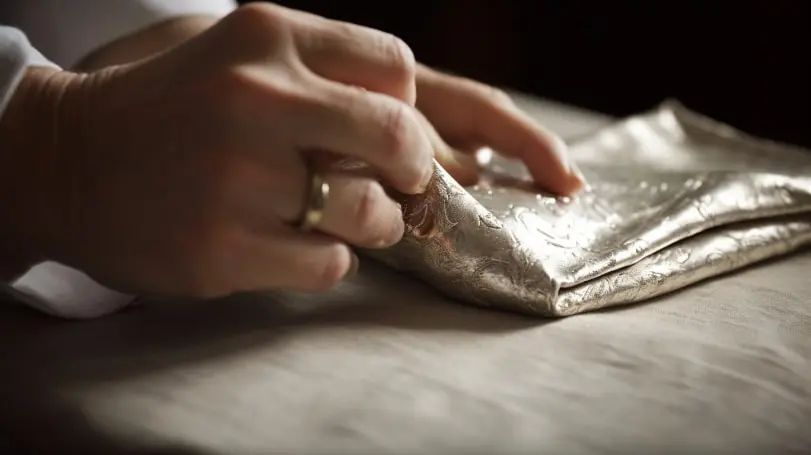
Polishing cloths are a safe and effective way to remove light tarnish from silver without causing any damage.
These cloths come in different sizes and materials, such as microfiber or cotton, and have a special coating that removes tarnish when rubbed on the surface of the silver.
Homemade solutions can also be used to clean silver, but they must be used with caution as they can potentially harm the metal if not properly diluted or applied.
Common homemade solutions include baking soda paste, vinegar solution, or even toothpaste.
However, it is important to test these solutions on a small area first before applying them to the entire piece of silver.
Professional silver cleaning services are also available for those who want a more thorough cleaning but may come at a higher cost compared to DIY methods.
It is recommended to compare prices and reviews of different service providers before choosing one for your needs.
| Cleaning Method | Pros | Cons |
|---|---|---|
| Polishing Cloths | Safe & Effective | May not work on heavy tarnish |
| Homemade Solutions | Cost-effective | Can cause damage if not properly diluted/applied |
| Professional Cleaning Services | Thorough & Convenient | Higher cost compared to DIY methods |
Alternative Methods for Cleaning Silver
An additional approach for maintaining silver includes exploring alternative cleaning methods that have been proven to be effective.
While traditional methods like using silver polish and a soft cloth are widely used, there are other ways to clean silver that may be more accessible or affordable.
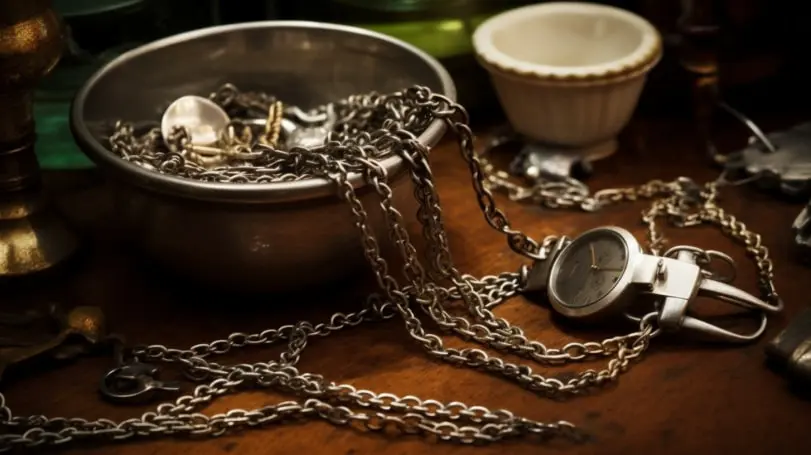
Here are some alternative methods for cleaning silver that you can try:
- Polishing cloths: specially made polishing cloths can remove tarnish and restore the shine of your silver items without any chemicals.
- Baking soda: a simple paste made by mixing baking soda with water can also help remove tarnish on silver. Apply the mixture on a soft cloth and rub gently onto the surface of the item, then rinse with warm water and dry thoroughly.
- Ultrasonic cleaners: these machines use high-frequency sound waves to create tiny bubbles in a solution that can clean intricate pieces of jewelry or flatware effectively.
- Vinegar: soaking your silver items in a solution of half white vinegar and half water is an easy way to remove tarnish. After soaking, rinse with warm water and dry thoroughly with a soft cloth.
- Toothpaste: non-gel toothpaste has abrasive qualities that make it an effective cleaner for removing tarnish from small items like jewelry.
It’s important to note that not all of these methods will work for every type of silver item, so it’s best to test them out on a small inconspicuous area first before proceeding with the whole item.
Additionally, always handle your silver gently to avoid damaging its delicate surface.
Common Myths about Cleaning Silver
Misconceptions about maintaining silver have been perpetuated, leading to common myths that may not be entirely accurate.
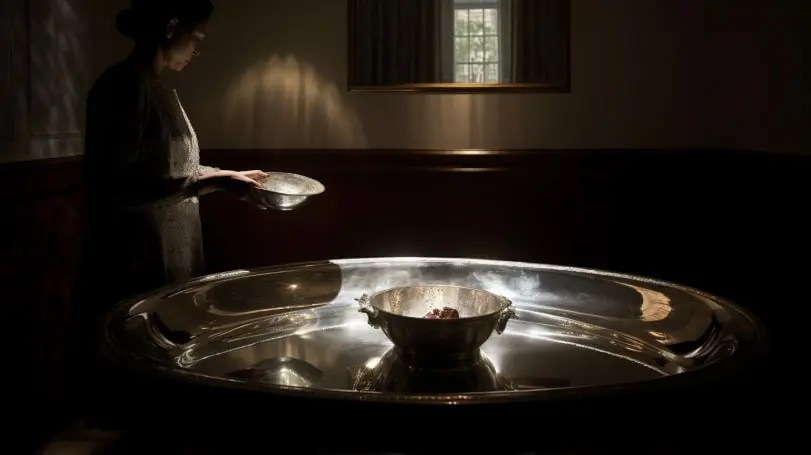
One of these myths is that DIY silver cleaning methods are just as effective as professional silver cleaning services.
While it is true that there are various household products one can use to clean their silver, such as baking soda and aluminum foil, these methods do not always guarantee the best results.
In fact, some of these DIY methods can damage the surface of the silver over time.
Another myth about cleaning silver is that professional services are too expensive and unnecessary.
However, investing in a professional service can actually save you money in the long run by preserving the quality of your silver pieces and preventing any damage from improper cleaning techniques.
Professional cleaners also have access to specialized equipment and solutions that effectively remove tarnish without causing harm to the metal itself.
It’s important to remember that while DIY methods may seem like an affordable option for cleaning your silver pieces, they don’t offer the same level of expertise and care that a professional cleaner can provide.
Final Thoughts on Using Sprite to Clean Silver
In conclusion, when it comes to cleaning tarnished silver, it is important to weigh the pros and cons of using alternative methods like Sprite versus traditional silver cleaners.
While some may prefer the convenience and affordability of using a household item like Sprite, others may argue that it is not worth the potential damage or incomplete cleaning results.
Personal preferences also play a role in deciding whether or not to use Sprite on valuable silver pieces.
Some individuals may be more willing to take risks with their lesser-valued items while reserving traditional methods for their more prized possessions.
Frequently Asked Questions
How long should I soak my silver in Sprite for it to work effectively?
Cleaning silver with Sprite can be effective, but optimal soaking time may vary depending on the level of tarnish. Alternative cleaning methods such as using baking soda and aluminum foil may also be considered.
Can I use a different type of soda to clean my silver?
When considering alternative soda options for cleaning silver, it is important to evaluate their effectiveness compared to Sprite. Additionally, the choice of soda can have an impact on environmental impact, as some brands may contain more harmful chemicals than others.
Will cleaning my silver with Sprite damage the finish or patina?
In assessing the effectiveness of using soda on silver, it is vital to consider alternative methods for cleaning silver without damaging patina. Sprite’s acidity may cause discoloration or erosion, but proper technique and a gentle touch can mitigate damage.
Is Sprite safe to use on all types of silver, including antique or delicate pieces?
When cleaning silver, it’s important to consider the types of tarnish present and the delicacy of the piece. Alternative cleaning methods, such as using a soft cloth and mild soap, may be safer for antique or delicate pieces.
Can I use Sprite to clean other metals besides silver?
When exploring alternative solutions for cleaning metals, Sprite can be compared to other sodas. While its effectiveness may vary on different metals, it is not limited to silver and can potentially work on other metals as well.
Conclusion
The use of Sprite as a cleaning agent for silver has been scientifically proven to be effective due to its acidic composition that dissolves tarnish.
However, caution must be exercised when using this method as it may damage delicate and antique pieces. It is recommended to first test on a small area before proceeding with the entire piece.
Furthermore, there are alternative methods such as using baking soda or professional silver cleaners that offer safer options for cleaning silver.
As the adage goes, ‘better safe than sorry,’ it is better to opt for safer methods rather than risking irreversible damage to valuable possessions.
In summary, while Sprite can be used as a quick fix for tarnished silver, it should not be relied upon as the sole method of cleaning in order to protect the longevity and value of these precious items.

